[dropcap]If[/dropcap] you’re a Sydneysider – there’s no need to explain that Darling Harbour is the hub for social activity. Nestled just across the Cockle Bay waters from the western edges of the cbd’s fringe, rubbing shoulders with Chinatown, Haymarket, Ultimo, Pyrmont and The Star, Darling Harbour has it all – picture perfect views and an eclectic/multicultural mix of buzzing crowd (locals and tourists) and restaurants to whet all discerning appetites, especially if you enjoy fine fresh Australian seafood/produce.
One such restaurant in the heart of the crowd is Blue Fish, aptly named because fish and seafood (although meat, including kangaroo is also on the menu) is their specialty. The name Blue Fish (which initially had me think of Dr Seuss) is reflected by the team of live blue fish mascots swimming nonchalantly in the fish tank inside the restaurant – some of which you’ll see in the photos below.
What’s not blue are the staff members here, whom greeted us with genuine warmth/welcoming smiles and provided us with a most pleasurable dining experience that I’m happy to recommend.
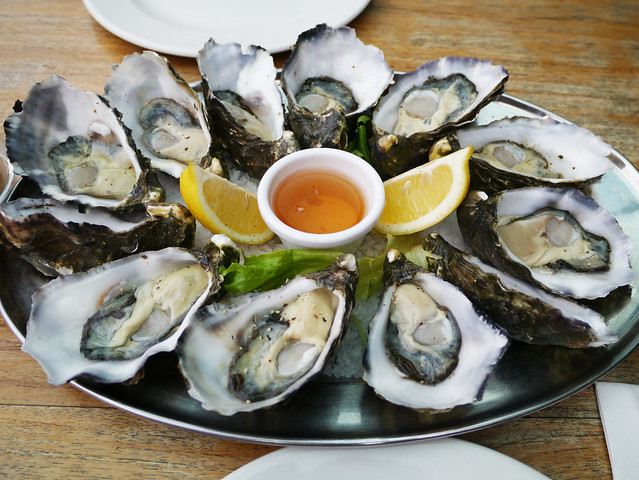
Freshly shucked natural oysters
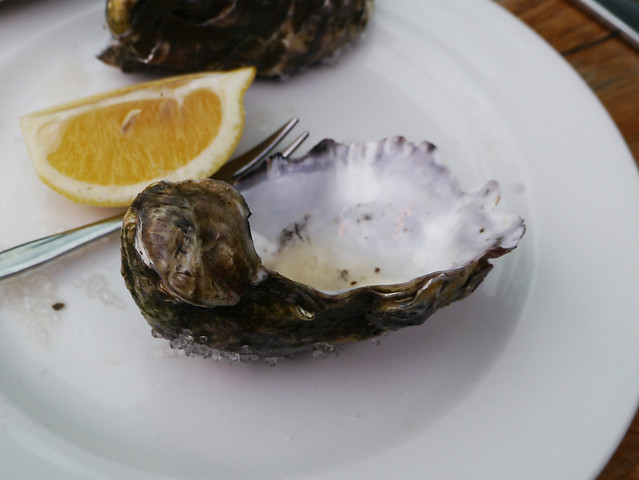
A smiling baby oyster on an oyster – how peculiar.
When we arrived for lunch, we were greeted by a friendly staff member and ushered to our table. After settling down from the human traffic outside and taking in the breathtaking views surrounding us, we ordered the house specialty to start our meal – fresh oysters – shucked on premise and served with vinaigrette, lemon and optional ground pepper.
We love oysters (who doesn’t, right?) and can eat them all day (within reason) and in every way possible, but au naturel like this time round, is one of our favourites and the best way to savour the oysters’ sublime natural flavours of the sea.
By the way, did you know that Australia has three main types of oysters – two ‘cupped’ (rock and Pacific), and one ‘flat’ (native). 1 I’m not certain what type our oysters at Blue Fish were, but they tasted fantastic! Fresh, moist, plump, creamy, salty and umami all in one – just how we’ve always enjoyed them.

Glass of Lisa McGuigan Pinot Noir
One by one, we ate the plump oysters with glee, complementing each serve with a sip of Lisa Mcguigan Pinot Noir (chilled) – a smooth light rounded red that enhanced our dining experience immensely. We were soon in a state of content relaxation – enjoying the fabulous food, views and music. For a good while, we felt oblivious to the city chaos that continued around us.
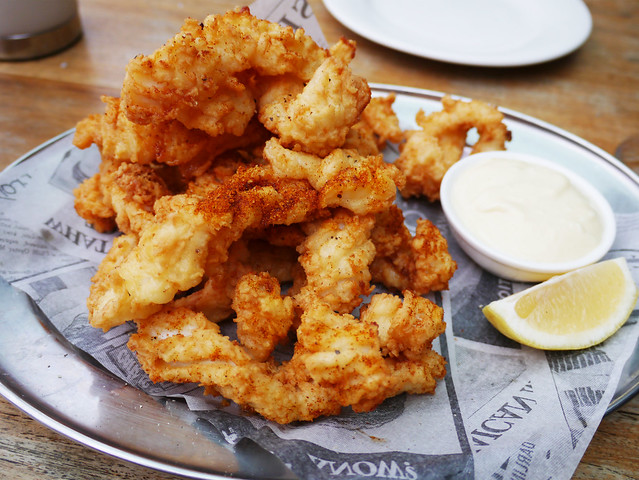
Salt & pepper squid, served with aioli and lemon. Is this Australia’s national dish?
We followed the fresh oysters with the recommended salt and pepper squid – served steaming hot and vibrant golden brown, with aioli and lemon. The criss-crossed squid pieces were crispy/crunchy on the exterior with buttery soft (non-rubbery) squid meat inside, generously dusted/coated with a finger-licking good s&p mix. They were delicious and addictive, and we could barely stop ourselves from continually picking and dipping them in the decadent aioli and burning our mouths as we hastily and happily ate them.
Salt & pepper squid is a classic/popular Australian dish and can be found in various incarnations on almost every pub, café or restaurant menu. It is light, tasty and extremely easy to eat and has been described as possibly one of Australia’s national dishes. 2 Judging from the salt and pepper squid at Blue Fish, it’s easy to see why.

Rocket, pear & parmesan salad
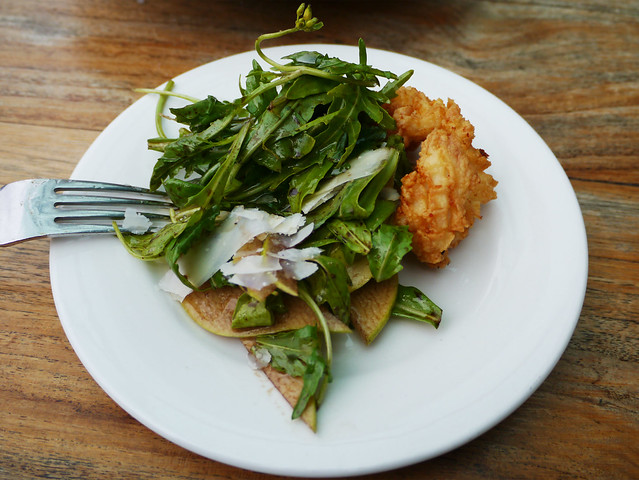
Rocket, pear & parmesan salad + salt & pepper squid
As fast as we ate the s&p squid, our rocket, pear & Parmesan salad arrived. It was a pretty generous bowl of fresh crispy/crunchy rocket, sliced sweet pears and slivers of flaky Parmesan. I enjoyed this salad so much (like most salads – being born under the rabbit sign might possibly explain why?). It was refreshing and clean, and tasted delicious and healthy – with a fine balance of sweet, sour, salty and bitter/peppery flavours. The freshness and sharpness of the salad complemented the moreish, slightly unctuous squid perfectly.
Don’t you just love being inspired by dishes at restaurants and wanting to recreate them at home? This s&p squid and salad combo is one of them for me. Both are relatively simple to create, and I’m pretty sure that (besides the chef’s finesse) the secrets to the success of these two dishes together are the use of quality fresh ingredients, and that wonderful vinaigrette/dressing in the salad!
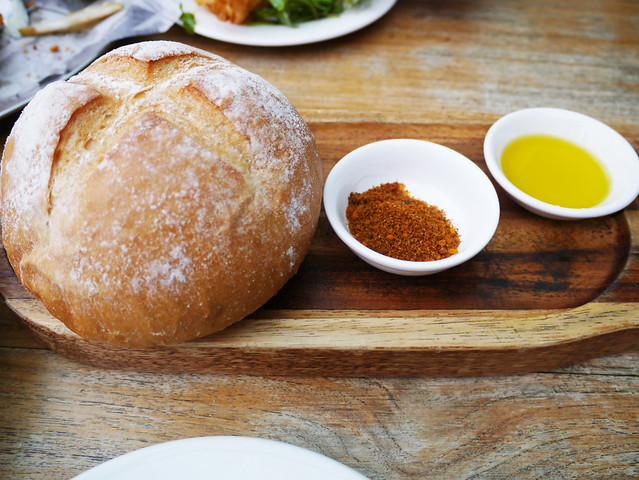
Home baked damper, served with native Australian seasoning and olive oil.
As a side, we ordered the home baked damper, served with native Australian seasoning and olive oil. We’ve had the damper at Blue Fish before, when it was made/served shaped quite rustic and rugged looking (you know, a bit like Doris the Ugly Stepsister in Shrek 2 – by the way, Doris is not ugly at all, she’s just different – oops!), which I like more because it looks more natural/organic and real. This time though, our damper looked perfectly smooth and round – scored, powdered and pretty, which is fine by me and still tasted delicious, but I love bush food and personally appreciate unpolished foods, and the knobbly/austere look of the old damper worked for me just fine. Yes, just another first world dilemma.
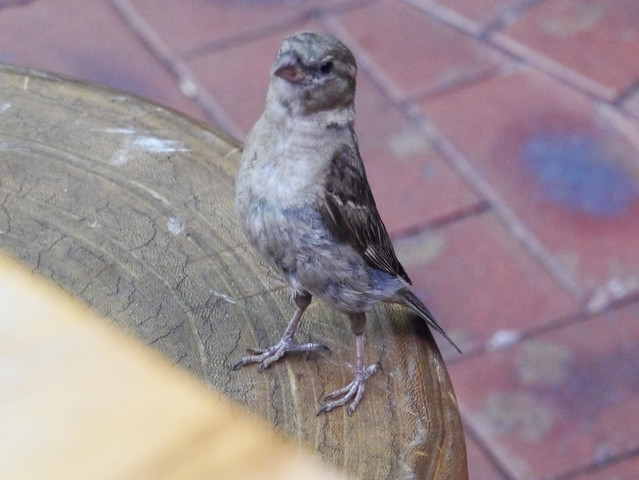
An inquisitive confident/proud little sparrow visited our table looking for some offerings in the form of damper crumbs. No worries little buddy.
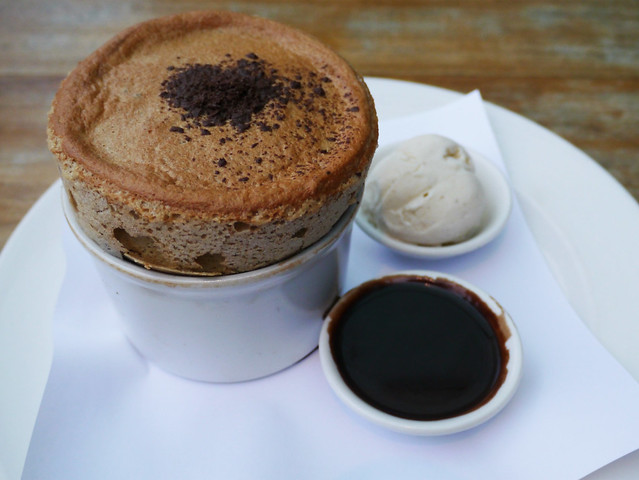
Chocolate soufflé – who invented this?!
For dessert, we ordered and shared the chocolate soufflé, served with vanilla bean ice cream and chocolate sauce – which tasted as good as it looks, and had inspired me to try and bake the world’s tallest soufflé! I can only try.
The top of the soufflé was firm and bouncy, and sprinkled with dark chocolate flakes. The body and base was soft and spongy, decadent and delicious, and everything good about a perfect soufflé. Needless to say, we made embarrassing sounds and talked with our mouths full as we dived in with our spoons, scooping out and savouring the puffy fluffy soufflé with the extra sweetness of the ice cream and chocolate sauce – omg.
It was a perfect conclusion to our lunch at Blue Fish – which I highly recommend!

Blue fish
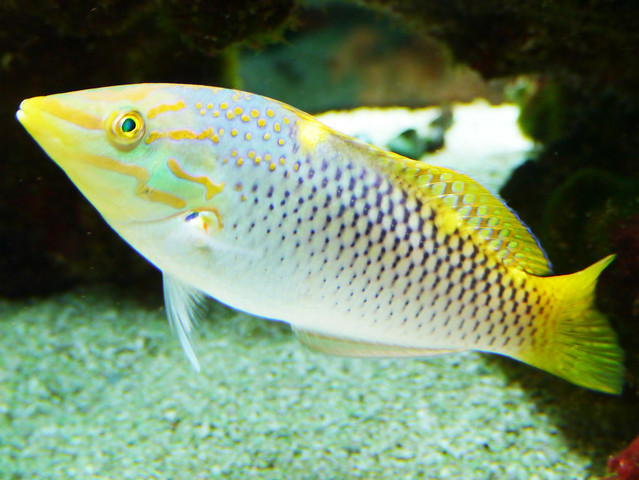
Yellow fish
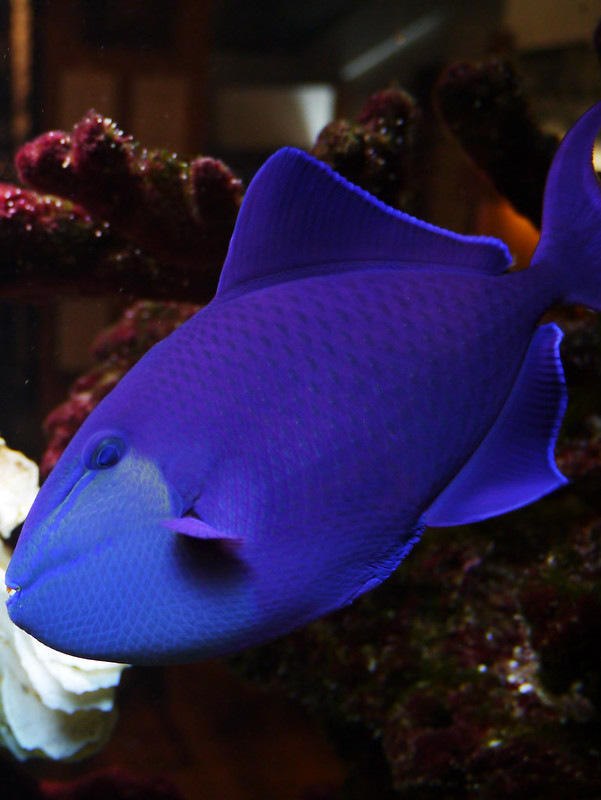
Blue fish #2
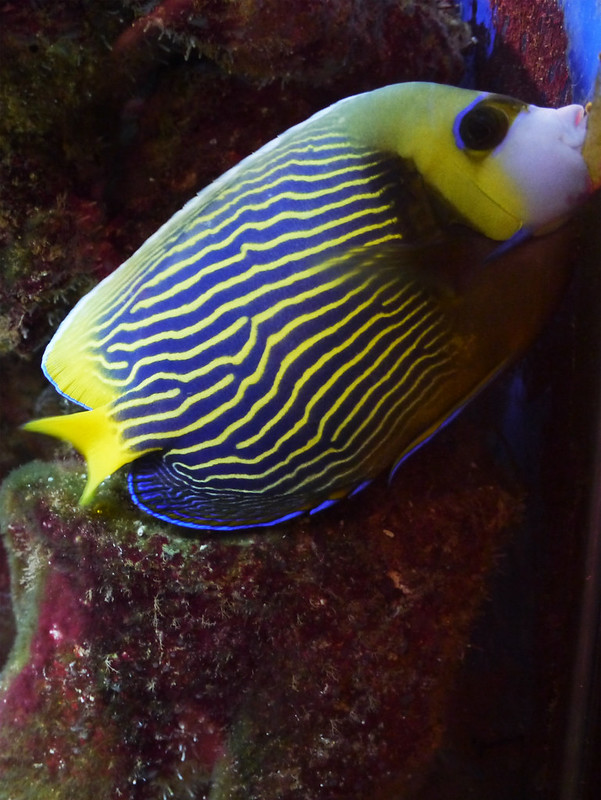
Blue and yellow fish with awesome stripes.
Unfortunately, it got cornered – this was the only way I could take a photo of him/her.
Blue Fish Seafood Restaurant Darling Harbour
287 Harbourside Promenade, Darling Harbour, Sydney
Phone: (02) 9211 0315
Website: http://www.bluefishsydney.com.au
Facebook: https://www.facebook.com/bluefishrestaurant
Notes:
- According to Sydney Fish Market – rock oysters are considered by many to be ideal for eating just before spawning (from September to March). On the other hand, Pacific oysters aren’t generally at their best just before spawning (being too rich and creamy for most people), and broadly, they’re best from April to September and best avoided during January and February. Native oysters are at their best from May to August. Reference: http://www.sydneyfishmarket.com.au/FISHline/SpeciesInfo/Oysters/tabid/170/Default.aspx. ↩
- For more info on Australia’s national dish, read:
http://blogs.wsj.com/scene/2013/10/30/what-is-australian-cuisine/,
http://www.taste.com.au/news+features/articles/1368/what+is+australias+national+dish,
http://www.taste.com.au/news+features/articles/1418/roast+lamb+rules+as+australias+national+dish,
http://www.thepunch.com.au/articles/our-national-dish-a-big-pile-of-meat/. ↩
